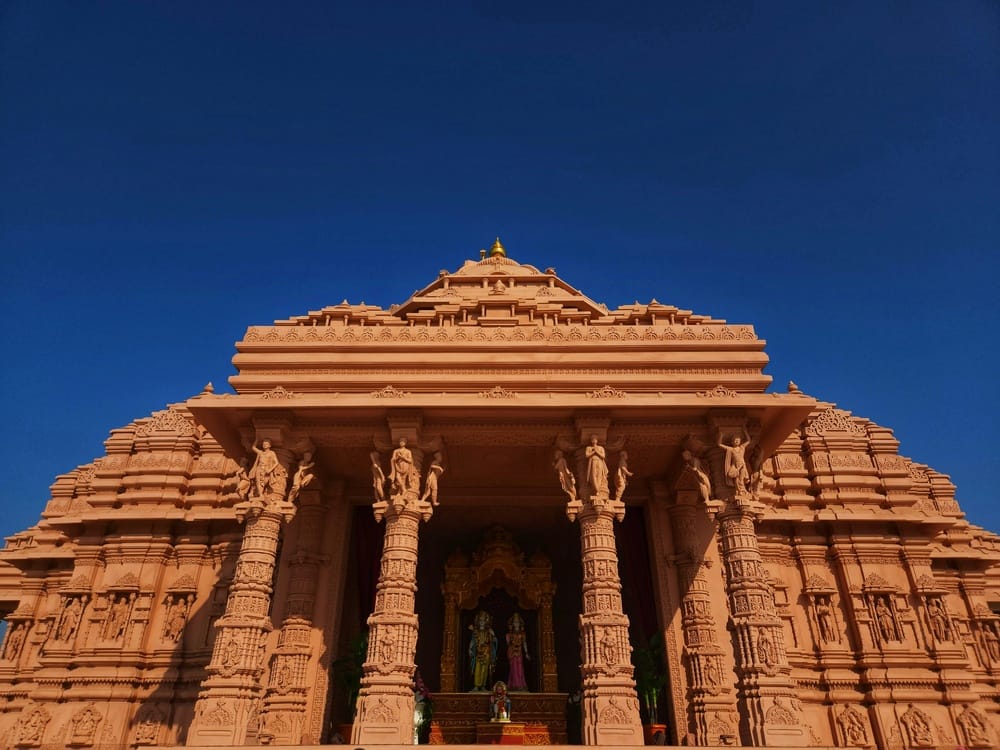A Complete Guide to the Best Ayodhya Visiting Places for Your Trip
Ayodhya, one of India’s most sacred cities, is deeply rooted in mythology, spirituality, and history. Situated on the banks of the Sarayu River in Uttar Pradesh, Ayodhya is revered as the birthplace of Lord Rama and is mentioned extensively in ancient scriptures like the Ramayana. With its blend of temples, ghats, and heritage sites, Ayodhya offers travellers an enriching and transformative experience. Here is a complete guide to the best Ayodhya visiting places that you must include in your itinerary.
1. Ram Janmabhoomi
Ram Janmabhoomi is the most significant site in Ayodhya. Believed to be the exact birthplace of Lord Rama, it is home to the grand Ram Temple, which is being constructed to reflect ancient temple architecture with modern grandeur. The temple complex is expected to become one of the largest spiritual centres in India, drawing devotees from across the world. Visiting Ram Janmabhoomi fills every traveller with devotion, peace, and a deep sense of cultural pride.
2. Hanuman Garhi
Hanuman Garhi is a prominent temple dedicated to Lord Hanuman. Located just 1 km from Ram Janmabhoomi, it is built atop a hillock and requires climbing 76 steps to reach the main shrine. Here, Hanuman is worshipped in a seated posture holding baby Rama. Locals believe that a visit to Hanuman Garhi before Ram Janmabhoomi darshan completes your pilgrimage, making it an essential stop in your list of Ayodhya visiting places.
3. Kanak Bhawan
Kanak Bhawan is a beautifully decorated temple dedicated to Lord Rama and Goddess Sita. It is said to have been gifted to Sita by Queen Kaikeyi after her marriage. The richly adorned idols of Rama and Sita wearing golden crowns mesmerise devotees with their divine aura. The temple’s intricate architecture and colourful designs reflect Ayodhya’s royal past and deep spiritual traditions.
4. Sita Ki Rasoi
Located near Ram Janmabhoomi, Sita Ki Rasoi is an ancient kitchen believed to have been used by Goddess Sita. The temple has a symbolic kitchen setup with utensils on display, representing domestic life in the Treta Yuga. Devotees offer grains and food items here, expressing gratitude and seeking blessings for prosperity in their homes.
5. Dasrath Bhavan
Dasrath Bhavan, situated in Ramkot, is believed to be the original palace of King Dasrath, father of Lord Rama. It houses beautifully decorated shrines of Rama, Sita, Lakshmana, and Bharat. The temple resonates with devotional songs and Ramayana chants, immersing visitors in Ayodhya’s rich cultural and mythological heritage.
6. Nageshwarnath Temple
This ancient temple dedicated to Lord Shiva is believed to have been established by Kush, son of Lord Rama. According to legend, Kush built this temple for a Nag-Kanya (serpent girl) who returned his lost armlet and was a devotee of Lord Shiva. The temple is an important site during Shivratri and a must-visit for Shiva devotees exploring Ayodhya visiting places.
7. Guptar Ghat
Guptar Ghat, located on the banks of the Sarayu River, is where Lord Rama is believed to have taken Jal Samadhi to leave his earthly life and return to Vaikuntha. The ghat has beautifully built steps leading into the river and is surrounded by temples. Devotees gather here for holy dips and evening aarti, which creates a serene and spiritual atmosphere against the backdrop of the setting sun.
8. Mani Parvat
Mani Parvat is a small hillock with great mythological significance. It is believed that a part of the Sanjeevani mountain carried by Hanuman to revive Lakshmana fell here. The hill has a Buddhist stupa, a Shiva temple, and a shrine dedicated to Hanuman. It also offers panoramic views of Ayodhya city, making it a peaceful spot for meditation and reflection.
9. Tulsi Smarak Bhawan
Tulsi Smarak Bhawan is dedicated to Goswami Tulsidas, the saint-poet who composed the Ramcharitmanas. It houses a museum preserving manuscripts, a research centre for Ramayana studies, and an auditorium where cultural programmes and Ramleela performances are held. For literature lovers and scholars, this is one of the most insightful Ayodhya visiting places.
10. Ram ki Paidi
Ram ki Paidi is a series of ghats built along the Sarayu River, designed for pilgrims to take holy dips. In the evenings, the ghats come alive with the beautiful aarti, where hundreds of diyas illuminate the river, creating a mesmerising view. During Deepotsav, lakhs of lamps are lit here, creating record-breaking displays that attract tourists globally.
Additional Tips for Your Ayodhya Trip
- Best time to visit: October to March for pleasant weather and festivals like Diwali and Ram Navami.
- Local cuisine: Try simple yet delicious vegetarian dishes like khichdi, poori sabzi, kachori, and sweets like peda and laddoo.
- Shopping: Ayodhya markets offer idols of Rama and Sita, Ramayana literature, brass artefacts, and handicrafts for souvenirs.
- Travel: Nearest airport is in Ayodhya itself (Maharishi Valmiki International Airport), while Faizabad is the closest railway station.
Conclusion
Ayodhya is more than just a city; it is a living embodiment of India’s spiritual, cultural, and mythological heritage. This complete guide to the best Ayodhya visiting places will help you plan a trip that is spiritually fulfilling, historically enriching, and culturally immersive. Whether you are a devotee seeking blessings or a traveller exploring India’s timeless traditions, Ayodhya will leave you with experiences and memories that resonate for a lifetime.


